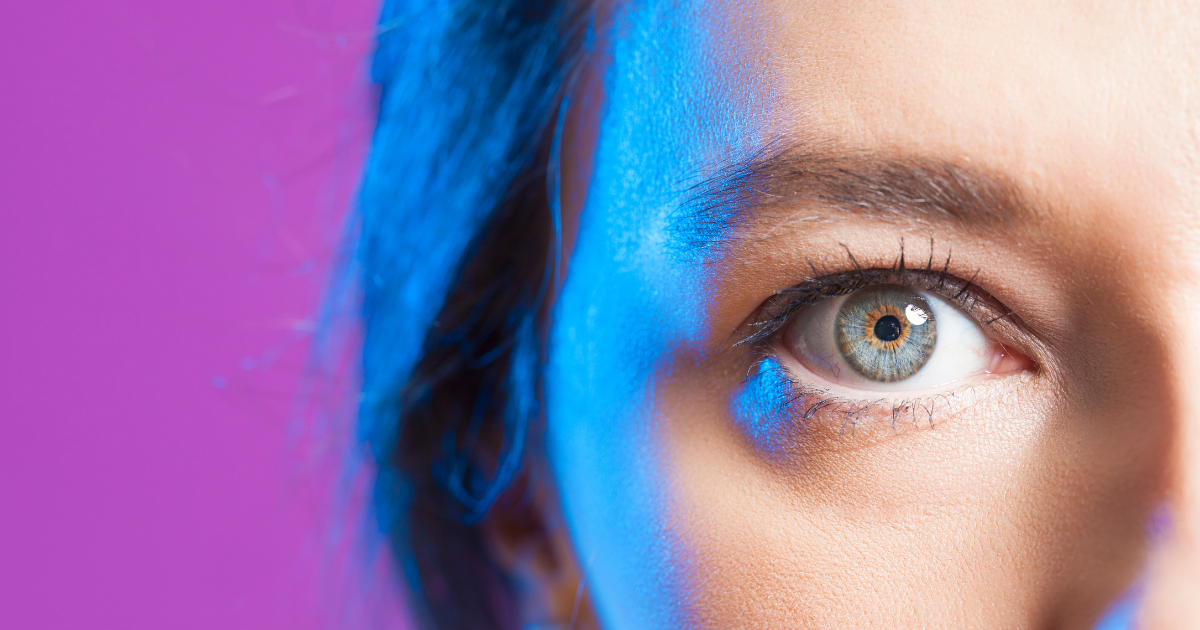Your Cataract Surgery Recovery Guide
June 5, 2025
Cataract surgery is one of the most common – and successful – eye procedures today. But even though the procedure is quick and painless, recovery still takes time.
How Long Does Cataract Recovery Take?

Recovery from cataract surgery is different for everyone. While most people follow a similar timeline, the speed of healing varies based on your health, your eyes, and even how you respond to the lens implant.
Read Getting Ready for Cataract Surgery if you need help knowing what to expect in the days before your surgery. Otherwise, read on to learn more about recovery.
Cataract Surgery Recovery Timeline
Cataract recovery does not happen all at once. It occurs in small stages as your eye heals and your vision clears.
Days 1–3: Immediate Effects
Your eye needs time to adjust right after cataract surgery. It is normal to notice some blurry vision during these first few days.
You may also have:
- Mild irritation, itching, or a gritty feeling in the eye
- Light sensitivity or a feeling like something is in your eye
- Watering or slightly red eyes
Your doctor will give you medicated eye drops to help reduce swelling and prevent infection. Be sure to use them exactly as directed. You will also need to rest and avoid touching or rubbing your eye.
Week 1: Functional but Fragile
By the end of the first week, many people are back to light activities. You might be reading, watching TV, walking, or doing small household tasks. However, your eye is still healing, so you will need to take it easy.
- Avoid lifting heavy objects or bending over too much
- Keep water, dust, and dirt out of your eye
- Wear sunglasses when outside to protect from sunlight and wind
At this stage, your vision may improve steadily, but still feel slightly “off.” That is normal and usually gets better in the coming weeks.
Weeks 2–4: Getting Back to Normal
Your vision will usually stabilize during this period. Most patients notice they can see clearly and comfortably by the end of the first month. You may also be cleared to resume more physical activity if your eye is healing well.
- You might be able to drive again, depending on your doctor’s advice
- Light exercise (like walking or stretching) is usually fine
- Still off-limits are strenuous workouts, swimming, and dusty environments
If you received an intraocular lens (IOL), your brain and eyes are now getting used to it. This adjustment period is different for everyone, but usually smooths out by the end of the first month.
Month 2 and Beyond: Long-Term Healing
By two months, most people feel like their vision has fully returned. At this point:
- Any lingering dryness or glare typically fades
- Colors may look brighter and sharper than before surgery
- Most restrictions will be lifted
- Your eye is usually considered fully healed
If you had surgery in only one eye, this may be when you begin planning for your second eye. You can read more about how the timing between surgeries works here.
If you ever feel something is off or have questions about how your vision is progressing, contact your care team.
What "Full Recovery" Really Means
When your doctor says your eye has “fully recovered,” they are often talking about two things:
- Structural healing – This is when the incision in your eye has closed, swelling has gone down, and your eye is physically healed. That usually happens by the 6- to 8-week mark.
- Vision stabilization – This is when your vision has stopped changing daily, and your brain has fully adjusted to your new intraocular lens. This process can take longer for some patients, especially if you had a certain type of IOL placed or a pre-existing eye condition.
What Affects Your Recovery Speed?

While most people have a smooth and fairly quick recovery, some may need extra time based on a few key factors. Understanding what affects your cataract recovery speed can help you set realistic expectations and know when to ask questions.
Age and Health
Your body’s ability to heal changes over time. Younger patients tend to bounce back faster. Older adults may heal more slowly, especially if they have other health issues.
Circulation, immune system response, and tissue repair all play roles in eye recovery.
Chronic Conditions
If you have diabetes, rheumatoid arthritis, lupus, or another chronic condition, your eye may take longer to heal. These conditions can affect inflammation, increase your risk of infection, or make your eyes more sensitive to surgery.
You may also need more follow-up visits or longer use of eye drops to keep inflammation in check.
Type of Cataract Removed
Some cataracts are harder to remove than others. Dense or advanced cataracts may require a slightly more involved procedure, which can lead to a longer recovery period.
Read How Different Types of Cataracts Develop and Three Types of Cataracts and Their Treatments for more information.
Type of IOL Used
The type of intraocular lens (IOL) placed during surgery can also affect your adjustment time. For example:
- Standard monofocal lenses usually require less adaptation
- Multifocal or toric lenses may take longer for your brain and eyes to adjust to the new way of focusing
For more information on IOLs, read:
- Intraocular Cataract Lens Surgery
- Intraocular Implants vs. Cataracts
- Intraocular Lenses vs. Light Adjustable Lenses
Following Aftercare Instructions
This is one area where you have control. Using your eye drops as directed, attending follow-up visits, and avoiding things like heavy lifting or rubbing your eye can make a big difference.
People who carefully follow their surgeon’s aftercare plan often recover faster and with fewer complications.
Existing Eye Conditions
If you already have another eye condition (like macular degeneration, glaucoma, or diabetic retinopathy), it can affect how quickly you heal and what kind of vision improvement you can expect.
These conditions do not prevent cataract surgery, but they may limit how much vision is restored and the time it takes to recover.
When to Call Your Doctor
Mild discomfort, blurry vision, and light sensitivity are expected in the first few days after cataract surgery. But some symptoms are red flags.
Here are signs that you should call your doctor right away:
- Persistent pain or pressure – Some scratchiness or mild aching is common early on, but sharp pain or ongoing pressure is not. If over-the-counter pain relief does not help or the discomfort worsens, your eye may be inflamed or infected.
- Sudden vision loss – If your vision suddenly gets much worse, becomes patchy, or goes dark, do not wait it out. This could signal a serious issue.
- Flashes, floaters, or increasing redness – A few floaters (those tiny specks that drift across your vision) are normal, especially if you had them before surgery. But a sudden shower of floaters, flashes of light, or spreading redness could mean your retina is under stress or pulling away. This needs immediate care.
- Unusual discharge – A small amount of clear tearing is expected. But thick, yellow, or green discharge is not. It could be a sign of infection. If you also notice the eyelids sticking together or a foul smell, call your provider.
- Fever or signs of infection – Cataract surgery recovery should not cause a fever. If you feel ill, run a fever, or develop chills along with eye symptoms, it may be a sign of a larger infection and should be checked right away.
You know your body best. If something feels wrong, even if not on this list, contact your eye care provider.
Frequently Asked Questions About Cataract Surgery Recovery

How long should I take off work?
Most people return to work within a few days to one week, depending on their job. If your work involves heavy lifting or outdoor exposure, you may need more time off.
Will I still need reading glasses?
That depends on the type of intraocular lens you received. Cataract surgery removes the cloudy lens but does not fix presbyopia, the natural aging of the eye that makes close-up vision harder.
- Monofocal IOLs correct either distance or near vision, but not both. Most people with monofocal lenses still need reading glasses.
- Multifocal or accommodating IOLs can reduce or even eliminate the need for glasses in many cases.
Your surgeon will discuss your lifestyle and vision goals when helping you choose the right lens.
When can I expect my final eyeglasses prescription?
Your eye care provider will wait until your vision is stable before prescribing new glasses. For most people, that happens around 6 to 8 weeks after surgery.
If you had surgery on both eyes, your doctor may wait until both eyes are healed before changing your prescription.
Tip: Do not rush to update your glasses in the first few weeks. Once healing is complete, you might end up with a prescription that no longer matches your vision.
When can I wear makeup or wash my face?
You should wait at least one week before wearing eye makeup. Avoid getting soap, shampoo, or water in your eye for the first few days. Use a damp cloth to clean your face, avoiding the area around the eye.
Learn more about dos and don’ts in After Cataract Surgery.
What should I eat or avoid eating?
There are no strict dietary restrictions, but healthy, anti-inflammatory foods like leafy greens, fruits, and lean proteins can support healing. Avoid excessive sugar or alcohol, especially if you have conditions like diabetes.
Can I sleep on the operated side?
It is best to avoid sleeping on the side of your surgery for at least a week. This helps reduce pressure on the healing eye and lowers the risk of irritation or injury while you sleep.
When can I have surgery on my second eye?
Most people wait 1 to 4 weeks between cataract surgeries. This gives your doctor time to check your healing progress, adjust your care plan if needed, and ensure your vision stabilizes in the first eye before proceeding with the second.
What Comes Next in Your Cataract Recovery
Remember, full recovery includes more than just structural healing. Your brain also needs time to adjust to your new lens, and your eye may continue to fine-tune your vision over time. Be patient with the process and do not hesitate to call your care team if you are unsure about a symptom or need guidance.
At Heart of Texas Eye Care, we are here to help you at every stage – from your first consultation to your final follow-up. If you have questions or want to schedule an appointment, call us at (512) 213-2220. Your vision is worth it!
We serve patients in Dripping Springs, Austin, Kyle, Bee Cave, Marble Falls, and other surrounding areas.


